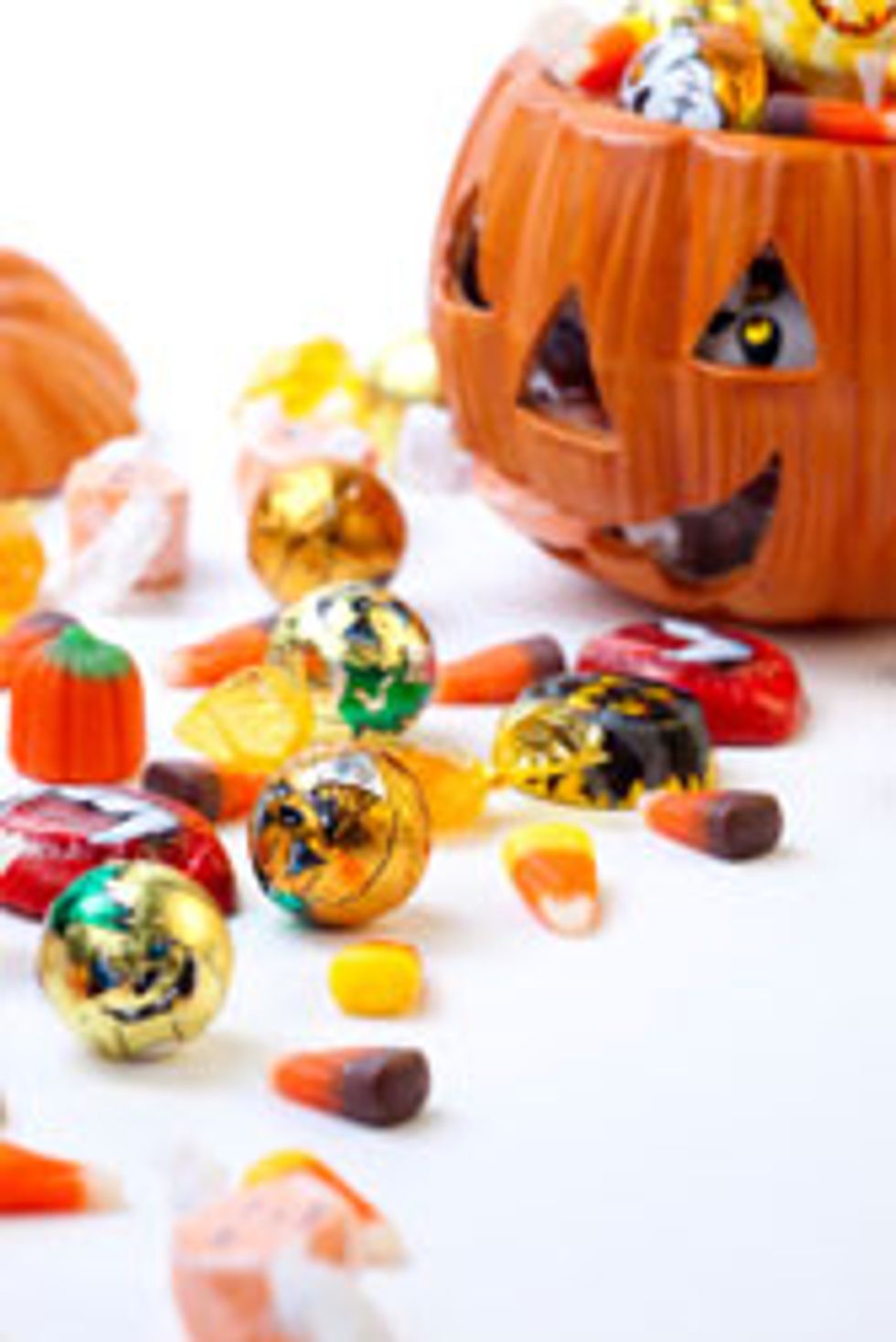
While ghosts, ghouls and goblins haunt the little ones on Halloween, a more terrifying monster haunts us parents: dental decay. We know the kids will come home Halloween night with bags full of candy, and we will immediately transform into the bad guys who must determine what and when and how much they can eat. Now that my kids are too old to trick-or-treat, I realize my candy management may not have been the best.
My kids were not huge candy eaters, and, generally, were contented with a handful or so of candy on Halloween night, followed by a daily treat in their lunch bags for weeks and months to come. Each of them kept a perpetually filled candy bag in the cabinet: first Halloween, then Christmas stocking candy, then Valentine's and finally, Easter candy. My method of doling it out piece by piece was great for weight management but may not have been so great for dental health (just ask my older daughter who's been plagued with cavities all her life).
The problem with my daily rations of candy was that my kids finished their lunches with a mouthful of sticky sugar—with no way to clean their teeth after they ate.
A recent press release from Raymond Hatland, DDS, who is part of the Chicago Healers integrative health care network, reminds us that Halloween candy is our worst enemy when it comes to teeth. Foods with starches and sugars mix with the mouth's natural bacteria to form a mild acid that erodes tooth enamel and causes those nasty cavities. But, don't worry. You don't have to dump your kids' entire stash of candy in the trash. Just follow these tips from Dr. Hartland:
- Wash it down. After your kids tire of stuffing themselves on Halloween candy, make sure they finish with a big glass of water to clean sugar residue off the teeth. Better yet, send them to brush their teeth and go to bed. (It is a school night, after all.)
- Avoid sticky situations. Limit sticky candies like toffee and gummy candies because the sugars stick to your teeth (remember trying to pick a Bit-O-Honey out of your teeth—and worrying that you'd pull out your fillings in the process?). Also go easy on hard candies like suckers, Jolly Ranchers and Tootsie Roll Pops (combines both sticky and long-lasting) because the sugars linger in your mouth longer.
- Satisfy your chocolate craving. The occasional piece of solid chocolate is better than one filled with a gooey center—again because it won't stay in your mouth as long, meaning the bacteria won't have as long to feed on the sugars. For kids' teeth, that means a Hershey's kiss or a Nestle Crunch mini-bar may be a better choice than a Snickers or a Three Musketeers—especially if the kids won't be able to rinse or brush when they finish.
- Chew on this. If you're traveling or are somewhere your kids can't rinse or brush after eating candy, give them a piece of sugar-free gum to help cleanse the mouth. Just make sure it's sugar-free—regular gum only adds to the problem. (As a parent, you should determine when it's safe for your child to chew gum. The International Chewing Gum Association recommends that very small children not chew gum.)
Don't limit your dental concerns to Halloween. Remember to get regular checkups for you and your kids and encourage brushing at least twice daily. Read labels carefully and seek low-sugar alternatives. Sugar can also be labeled as corn syrup, molasses, dextrose, fructose, glucose, sucrose and honey. Too much sweet stuff can cause blood sugar to spike and energy to crash later on—not to mention what it does to your teeth.
